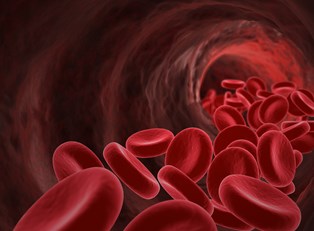Anemia is a blood disease characterized by insufficient red blood cells or too few healthy red blood cells. This deficiency results in too little oxygen spread around the body, specifically to vital organs. In turn, patients with anemia may have a marked pallor, tend to fatigue and weakness, difficulty breathing, abnormal heartbeats, headaches, and cold extremities.
Symptoms vary depending on what type of anemia presents, and the duration and severity may vary as well. In turn, appropriate treatment depends on the cause and type of anemia being treated. Here’s a look at treatment options based on the cause of anemia.
Deficiency-Related Anemia
Insufficient amounts of iron, vitamin B12, and folic acid can all lead to certain types of anemia. Iron deficiencies can often be managed by a change in diet that includes more iron-rich foods, such as spinach, liver, black beans, eggs, pumpkin seeds, and a variety of other foods. It may be necessary to supplement dietary changes with an iron supplement. Iron deficiencies can also be caused by excessive bleeding, which is treated by finding and stopping the bleeding.
Likewise, B12 and folic acid can be increased in the body in the same way. Some people’s bodies, however, have trouble taking in the B12 necessary, and so shots may be needed.
Hemolytic Anemia and Thalassemia
Hemolytic anemia is a type of anemia in which red blood cells are destroyed prior to finishing their natural life cycle. While dead red blood cells would normally be replaced, hemolytic anemia means the body cannot make new ones quickly enough to replace those lost. Hemolytic anemia may be inherited or idiopathic (unknown cause). Not knowing what causes the issue makes it difficult to treat, although the immune system is a likely culprit, attacking red blood cells inappropriately.
Immunosuppressants may help, as can managing illnesses that can contribute to the issue and being wary of certain medications. Blood transfusions, removing the spleen, and a filtering of the blood called “plasmapheresis” may be necessary in more severe cases. Thalassemia, an inherited abnormality of the hemoglobin of red blood cells, may be treated similarly, or supplements and medication.
Sickle Cell Anemia
Sickle cell anemia is an inherited disease that cannot be cured. The red blood cells the body produces are not formed correctly, developing in a “sickle” shape instead of rounded. Managing sickle cell diseases can require a variety of treatments often used for different types of anemia, including bone marrow transplants, supplements, and cancer drugs. Other useful managements may include oxygen therapy, antibiotics, pain management, and dealing with other complications that may arise as a result of sickle cell anemia.
Disease-Related Anemia
There are several different types of diseases that can result in anemia, including but not limited to cancer, HIV/AIDS, kidneys diseases, Crohn’s disease, and inflammatory diseases. In most cases, treating anemia requires treating the underlying disease.
In some instances, the symptoms of anemia come on very slowly. When they become severe, it may be necessary to try blood transfusions or synthetic erythropoietin injections. Erythropoietin is produced by the kidneys, and injections of the man made version can help kick start the production of red blood cells, minimizing fatigue.
Bone Marrow-Related Anemias
Certain bone marrow diseases are another major cause of anemia, and again, the bone marrow disease itself must be managed to manage the resulting anemia. According to the Mayo Clinic, this may requires “medications, chemotherapy, or bone marrow transplantation.” Aplastic anemia is also related to bone marrow development. Treatment may also involve transfusions or a bone marrow transplant, if the bone marrow cannot be encouraged to produce blood cells properly.



